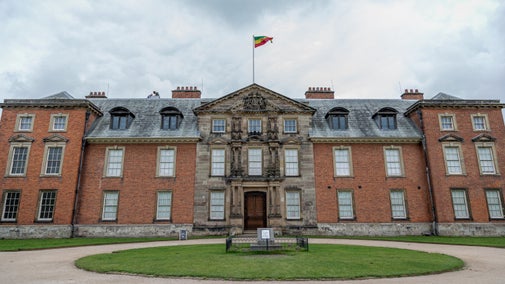
Start your journey of discovery
Delve into history, get tips from our experts, learn a new skill and go behind the scenes of your favourite places.

Find out more about people from the past, discover remarkable art and collections and brush up on your knowledge of architecture and gardens.
Delve into one of the world's greatest collections of art and historical objects. From paintings to sculptures, there’s something for every art lover to discover.

Spring's promise of new beginnings has been an inspiration to artists and designers for centuries. Discover spring through some of its most evocative depictions in the collections and objects we care for.

Learn how innovations in country house communication technology, from sprung bells to early telephones, transformed the ways servants could be summoned.

Take a closer look at some of the Easter objects in our collections. From a religious holy day to a time for family traditions, explore the origins of Easter and the symbolic egg.
Read the stories of people from history and learn about their connections to the historic places in our care, from Beatrix Potter to the Beatles.

Discover the places and collections we care for that have connections to Black histories. Learn more about the people behind these connections, including the lady of the house at Dyrham Park in South Gloucestershire and an exiled emperor at Dunham Massey in Greater Manchester.

Read the story of some of the National Trust's most mysterious and unconventional benefactors and how two authors discovered more about their true identities.

Learn about the life of Lady Mary Wortley Montagu and the role she played in introducing smallpox inoculation to Western medicine.
Read up on architecture with in-depth articles about architectural styles, interior design through history and architectural structures.

Learn how Palladianism combined classically symmetrical exteriors with lavish interiors and went on to gain huge popularity with renowned architects in England in the 18th century.

As fashions change over the eras, so do our homes. Explore the history of British interior design and learn about the centuries of design innovation at the places we care for.

Discover how it became popular in the 18th and 19th centuries to style literature, architecture, art, music and more after the features of the late medieval Gothic period.
Discover the history of the natural landscapes around you. From glasshouses to sunken lanes, understand more about how these gardens and green spaces were formed.

Uncover the history behind the daffodil, including how it came to be one of the UK's favourite flowers, where it came from and how to classify its many varieties.

Explore how changing tastes influenced the style of gardens over the centuries and discover where you can find the best examples from each period at the places we care for.

Find out more about the picturesque aesthetic style and how it became a fashionable choice for wealthy estates in the 18th century. Learn more about the people who influenced the movement.

Delve into history, get tips from our experts, learn a new skill and go behind the scenes of your favourite places.